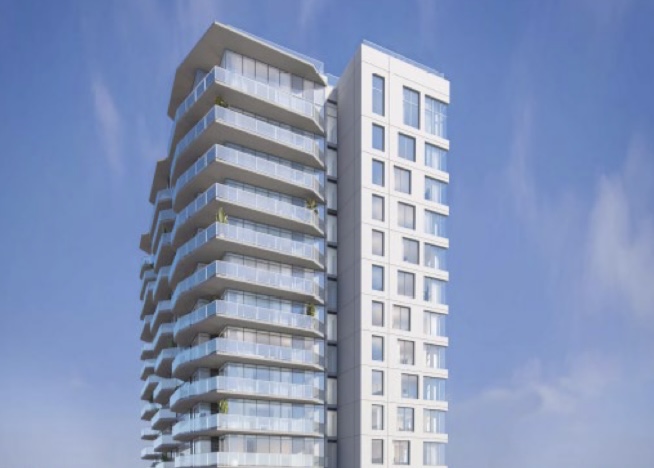The 194-foot-tall building exceeds local height limits by 109 feet under California’s Density Bonus Law
The Santa Monica Planning Commission unanimously approved an 18-story, 172-unit residential tower at 1437 6th Street on June 18 denying an appeal from the Supporters Alliance for Environmental Responsibility that sought a full environmental review under the California Environmental Quality Act.
The project, developed by 1437 6th Street Owner LLC, includes 26 affordable units and two levels of subterranean parking with 55 vehicle spaces and 88 bicycle spaces. Located in the Neighborhood Village zoning district, the 194-foot-tall building exceeds local height limits by 109 feet and increases the floor area ratio from 4.0 to 10.0 under California’s Density Bonus Law.
SAFER argued the project required CEQA review, citing its discretionary nature and the demolition of a potentially historic building at 1433 6th Street. The group claimed the Architectural Review Board (ARB), which approved the project’s design on April 21 has authority to address environmental impacts, including public health and safety, under the Santa Monica Municipal Code.
The commission, acting as an appellate body, rejected the appeal, affirming the project’s exemption from CEQA as a ministerial action under Section 15268 of CEQA Guidelines. Commissioners stated their review was limited to design elements, such as materials, colors, and landscaping, and lacked authority to impose environmental mitigations. They cited legal precedent, including a 2018 case from St. Helena, to support the exemption.
The project’s design features two vertical forms: one with white plaster inspired by local architecture and another with an all-glass facade. It includes balconies, a roof deck, and operable windows for all units. The ARB imposed conditions to enhance the east and west elevations and ensure appropriate plant selection.
The commission also noted that the site’s historic status was not designated at the time of the project’s application, and state law prohibits retroactive historic determinations after an application is deemed complete. No landmarks designation was proposed during the required 75-day review period.
SAFER’s appeal, filed April 29, did not allege specific environmental impacts but focused on procedural claims. The commission’s decision, required within 30 days of the hearing under local and settlement agreement terms, finalizes the ARB’s approval.











